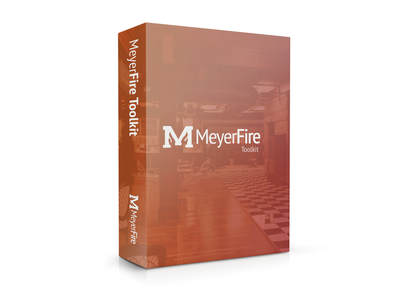|
NFPA 13 has clear requirements which do not encourage pipe to be routed underneath buildings (NFPA 13 2016 Section 10.4.3 / 2019 Section 6.4.3).
As best I can tell NFPA 13R does not have similar provisions, although the reasoning for not routing underneath is the same (pipe can become compromised by building settling, leakage is extremely difficult to repair, leakage could cause significant building damage). Do I have any justification to not allow pipe to be run underneath a building designed under NFPA 13R? The project at hand is an attached block of apartments that has a breezeway in-between, and the contractor is looking to run pipe back underground (below footings and the breezeway sidewalk) to serve the block of apartments on the opposite side. Posted anonymously by a member for discussion. Discuss this | Subscribe
7 Comments
2/6/2019 10:51:28 am
Would you not want to consider that part of the installation as underground fire main, complete with inspection for depth-of bury, size of main, etc.?
Reply
PETE
2/6/2019 10:52:24 am
NFPA 24 (2016) 10.4.3.1.2 piping shall be installed minimum of 12 in. below building foundations or footers.
Reply
WES
2/6/2019 10:58:28 am
I don't think the breezeway sidewalk is the issue though.
Reply
PETE
2/6/2019 03:14:41 pm
Wes,
WES
2/6/2019 03:35:22 pm
Thanks so much Pete.
Leroy
2/6/2019 09:49:11 pm
Very frequently we run into contractors that don't want to opt for the creative options. We usually end up running copper from an interior wall under the breezeway and back up inside the adjacent unit. This "loop" is detailed in the submittals and submitted to the AHJ. In our area the FM usually elects to witness a 200 psi test on the loop before the slab is poured.
Reply
Greg McGahan
2/28/2024 02:43:30 pm
13R 2016 Ed annex A 5.3 says SHOULD, not shall, but does refer back to NFPA 24 for supplies 4" and larger.
Reply
Leave a Reply. |
ALL-ACCESSSUBSCRIBESubscribe and learn something new each day:
COMMUNITYTop March '24 Contributors
YOUR POSTPE EXAMGet 100 Days of Free Sample Questions right to you!
FILTERS
All
ARCHIVES
April 2024
PE PREP SERIES |
MeyerFire
- Blog
- Forum
-
THE TOOLKIT
- SUBMIT AN IDEA
- BACKFLOW DATABASE*
- CLEAN AGENT ESTIMATOR*
- CLOUD CEILING CALCULATOR
- DOMESTIC DEMAND*
- FIRE FLOW CALCULATOR*
- FIRE PUMP ANALYZER*
- FIRE PUMP DATABASE*
- FRICTION LOSS CALCULATOR
- HANGER SPACER*
- IBC TRANSLATOR*
- K-FACTOR SELECTOR*
- NFPA 13 EDITION TRANSLATOR ('19 ONLY)
- NFPA 13 EDITION TRANSLATOR ('99-'22)*
- LIQUIDS ANALYZER*
- OBSTRUCTION CALCULATOR
- OBSTRUCTIONS AGAINST WALL*
- PITOT CONVERTER
- PLUMBING FIXTURE COUNTS
- QUICK RESPONSE AREA REDUCTION
- REMOTE AREA ANALYZER*
- SPRINKLER DATABASE*
- SPRINKLER FLOW*
- SYSTEM ESTIMATOR*
- TEST & DRAIN CALCULATOR
- THRUST BLOCK CALCULATOR
- TRAPEZE CALCULATOR
- UNIT CONVERTER
- VOLUME & COMPRESSOR CALCULATOR
- WATER STORAGE*
- WATER SUPPLY (US)
- WATER SUPPLY (METRIC)
- UNIVERSITY
- PE Exam
- LOGIN
- PRICING
- OUR CAUSE

MeyerFire.com is a startup community built to help fire protection professionals shine.
Our goal is to improve fire protection practices worldwide. We promote the industry by creating helpful tools and resources, and by bringing together industry professionals to share their expertise.
MeyerFire, LLC is a NICET Recognized Training Provider and International Code Council Preferred Education Provider.
All text, images, and media Copyright © 2023 MeyerFire, LLC
We respect your privacy and personal data. See our Privacy Policy and Terms of Service. The views, opinions, and information found on this site represent solely the author and do not represent the opinions of any other party, nor does the presented material assume responsibility for its use. Fire protection and life safety systems constitute a critical component for public health and safety and you should consult with a licensed professional for proper design and code adherence.
Discussions are solely for the purpose of peer review and the exchange of ideas. All comments are reviewed. Comments which do not contribute, are not relevant, are spam, or are disrespectful in nature may be removed. Information presented and opinions expressed should not be relied upon as a replacement for consulting services. Some (not all) outbound links on this website, such as Amazon links, are affiliate-based where we receive a small commission for orders placed elsewhere.













 RSS Feed
RSS Feed
